
Wine cellars keep wines at optimal temperature and humidity levels as well as protection against too much light or external influences. Thanks to technological advancements, we can now build wine cellars that can store wines in perfect conditions and enjoy them in our own homes.
If you plan on creating or upgrading by adding a custom wine cellar for your luxurious home, continue reading to learn more.
History
The earliest wine cellars ever recorded could date back to 1700 B.C. in Northern Israel. Archaeologists discovered a storage room inside a Canaanite Palace holding remains of ceramic jars. Further analysis of the residues on these ceramic jars revealed traces of organic acids typically found in creating wine.
Multiple factors influence the quality of a wine and our ability to store it, like temperature and humidity. Wine enthusiasts also have a variety of techniques to aid the process of wine-making. Additionally, wine cellars have also evolved a lot over the years, making us capable of storing and aging wines in more advanced and sophisticated methods.
Nowadays, homeowners have the option of adding a perfectly functioning wine cellar even in smaller houses. Doing so is also easy and hassle-free with only minimal time and effort.
The Benefits of Having a Wine Cellar
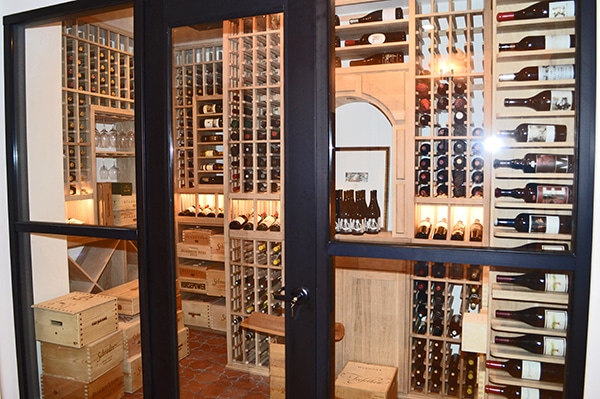
Collecting wine is a passion that requires constant maintenance to ensure that the wine bottles are stored appropriately to avoid losing their quality. They should also be protected from external factors like temperature, humidity, over-exposure to sunlight, and vibrations.
Getting expert advice from trusted wine cellar contractors or designers will aid you in making an informed decision about what type of design and functions you want to add. Here are some advantages of upgrading to a well-constructed wine cellar:
It Keeps Wine From Spoiling
Wine refrigerators are not ideal for long-term storage as they are only meant for hobbyists and casual drinkers. Wine is a perishable product and it will definitely go bad if it gets exposed to fluctuating heat and humidity, sunlight, and vibrations.
Meanwhile, a wine cellar is for people who collect and store wines for years. A wine can develop more complexity in its flavor and aroma if stored under excellent conditions.
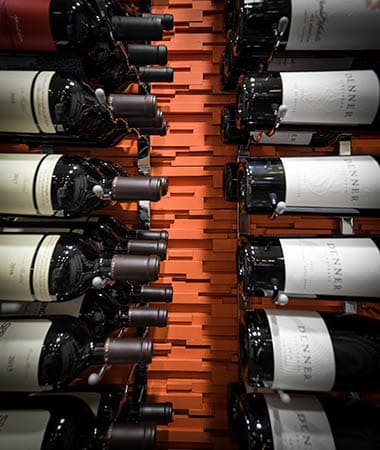
It Helps With Organizing Your Collection
A built-in wine cellar ensures that all of your wines are organized together with all the other equipment you might need for managing them. Having easy access to all your wines can make it easier to keep track of what wines you have currently and plan for future purchases. You can also organize your collection based on their peak quality and easily choose the precise moment to drink them.
A Custom Wine Cellar Increases the Value of Your San Diego Home
Custom upgrades like a house with its own wine cellar are significant driving factors increasing the property’s value. This gives potential buyers the idea that the person who lives in that house leads a luxurious life.
Reports also indicate that wine cellars are included in the list of custom house upgrades that help increase the house’s selling price by 30% compared to its original value. Recent reports also show that 31% of new home-buyers named wine cellars as an amenity they would like inside their homes.
Ideal Wine Cellar Storage Conditions
The critical elements in storing wine are ensuring that you have light, humidity, temperature, and vibration in check. Upgrading to a wine cellar is a long-term investment. It is advisable to pick a space in your house that will be able to sustain ideal conditions for storing wine.
Light and Temperature
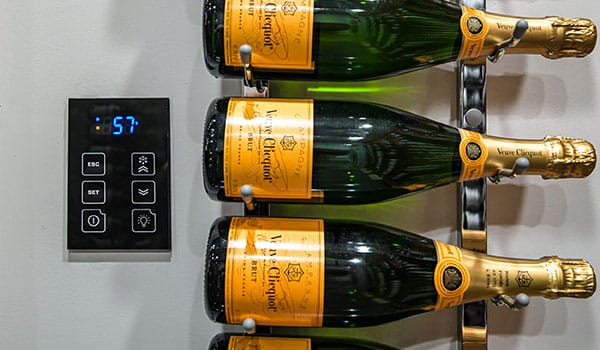
High temperatures ranging from 65°F or higher can cause wines to age prematurely. Storing them in excessively cooled locations will result in the wines losing their aroma and flavor.
The basement is an ideal location to build your custom wine cellar or any area in the house below the ground level. The temperatures are naturally cool for below-ground level areas all year round.
Choosing a farther location from water heaters, boilers, furnaces, or any part of your house that generates heat is also recommended. Avoid areas near open windows to avoid shifting temperatures due to sunlight exposure.
Vibration
Vibrations can affect the chemical composition of the tartaric acid inside wines, influencing their quality, aroma, and taste. High vibration levels result in a significant decrease in tartaric acid content compared to low vibration levels.
Tartaric acid is a unique acid that is commonly found in grapes. This acid plays an essential role during a wine’s fermentation process because it influences the stability of the wine’s pH levels changing its odor and taste.
Smaller Storage Areas and Humidity
When working with a smaller space, you should use low-wattage lights to avoid too much heat. Smaller enclosed spaces tend to retain more heat and investing in a quality cooling unit for a wine cellar will keep the room’s humidity levels balanced. Switching the flooring materials to a tile made of slate, ceramic, or porcelain will also help in keeping the room cool.
The Importance of a Cooling System in Wine Cellars
An excellent cooling system can fully maintain the balance between humidity and temperature. To ensure that the wines are properly stored, humidity levels should range from 50% to 70%, and the acceptable temperature level should range from 50 to 59°F.
The most popular wine storage cooling systems have extra features besides keeping the storage conditions controlled. A cooling unit will also help protect the room from excess moisture, preventing corks from contaminations like molds.
From the size of the equipment and installation process, it’s best to learn about all types to see which is the most suitable cooling system for your wine cellar.
Three Common Types of Wine Cellar Cooling Systems
There are various wine cooling units to choose from depending on what conditions you’d like to factor in like room size, ease of installation, power usage, and noise. It’s equally important to determine the amount of money you’re willing to spend to choose the right brands within your budget.
Self-Contained
A self-contained cooling system is a single-piece unit mounted or vented through the cellar walls, making it the easiest to install. This cooling equipment works best with spaces or areas with sufficient ventilation and is also the most budget-friendly wine cooling unit.
You will not see any outer ductwork or drain lines for self-contained units. It is basically a one-piece of equipment where everything needed to cool the room is built right in including the exhaust system. These units are best suited for wine cellars built in smaller spaces.

Split Systems
Split systems are ductless units that provide various cooling options for a wine cellar. They are suitable for wine cellars without a proper ventilation system available. A split unit consists of two parts which are the evaporator and the condenser.
- The evaporator is mounted on the wall, similar to a self-contained unit. It works by removing the heat inside the room by using refrigerants. The evaporator converts the refrigerant from liquid to gas and then delivers the cold air coming out of the vents.
- On the other hand, the condenser is connected to the evaporator through pipes or tubings. It disperses the heat from the room to the outside air. The condenser can be placed in another room or outside the house for proper dissipation of heat and noise.
Ducted Systems
A ducted cooling system works similarly to a centralized air conditioning system where the cold and hot air travels back and forth along the ducts. The evaporator and the condenser are both placed outside or in a separate room, making the equipment invisible to people in the wine cellar.
This system is considerably more expensive compared to split and self-contained ones but boasts better features like an insanely quiet condenser and the capacity to cool down large-sized spaces. A ducted system is highly recommended if you plan to dedicate a large room or space to a custom wine cellar.
Types of Residential Custom Wine Cellar Designs for your San Diego Home
Nowadays, a wine cellar is built not just simply for storing a wine collection. Present designs focus on functionality and quality instead of aesthetics. How you make your wine cellar will represent your personal taste and lifestyle as a wine connoisseur.
Rustic
Wine cellars with rustic interiors create a varied look that perfectly blends nature with your desired space. Achieving a rustic styled wine cellar relies on the following concepts: decors and furnishing finished in neutral and monochromatic hues or constructed from natural materials.
Other materials used are paper, clay, glass, and rattan that contrast with stone or hardwood floors with neutral and flat finishes. This contrast of various colors, patterns, and textures is the main objective of achieving a rustic-inspired wine cellar.
Modern
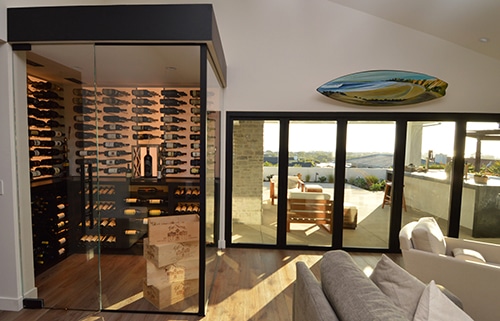
Modern-themed wine cellars use materials that prioritize function over form, giving off a sleek and contemporary look. Glass also emanates a simplistic yet modern vibe and it is one of the most popular materials for designing a modern-inspired wine cellar.
You may use glass enclosures to surround the whole cellar area by using double-paned glass. When setting up wine racks, use steel rods as support to mimic a floating look for the wine bottles.
LED lighting is used to illuminate all wine racks to place your collection under a constant spotlight. Chandeliers and pendant lights also give a luxurious feel that perfectly matches the glass enclosures and wine racks.
Vintage
Vintage wine cellars come with a classic and old-world charm that draws inspiration from certain periods like the 1950s or 19th-century Europe. The main objective of achieving a vintage-themed style is to reuse old materials to build newer design pieces that give off a nostalgic atmosphere to the area.
Mahogany is a commonly used wood material for vintage decors because of its distinct warm tone and appealing texture. This hardwood has a reddish-brown or pink hue that only intensifies over time. Using it as the primary material in building custom wine racks will accentuate further the look you are aiming for.
Under-Stairs
Not everyone wants an extensive wine cellar but that doesn’t mean they’re less passionate or less serious about collecting wine. Some wine collectors will consider space limitations or their personal preferences for choosing a smaller cellar.
Going for an under-stairs design for a wine cellar is an excellent example of having a modest setup yet still maintaining style and aesthetics.
Building a wine cellar under your stairs may initially sound strange. However, the unused space under the staircases presents many possibilities to upgrade that empty area to showcase your wine collection to everyone.
Cable Wine Displays the New Ultra-Contemporary Trend
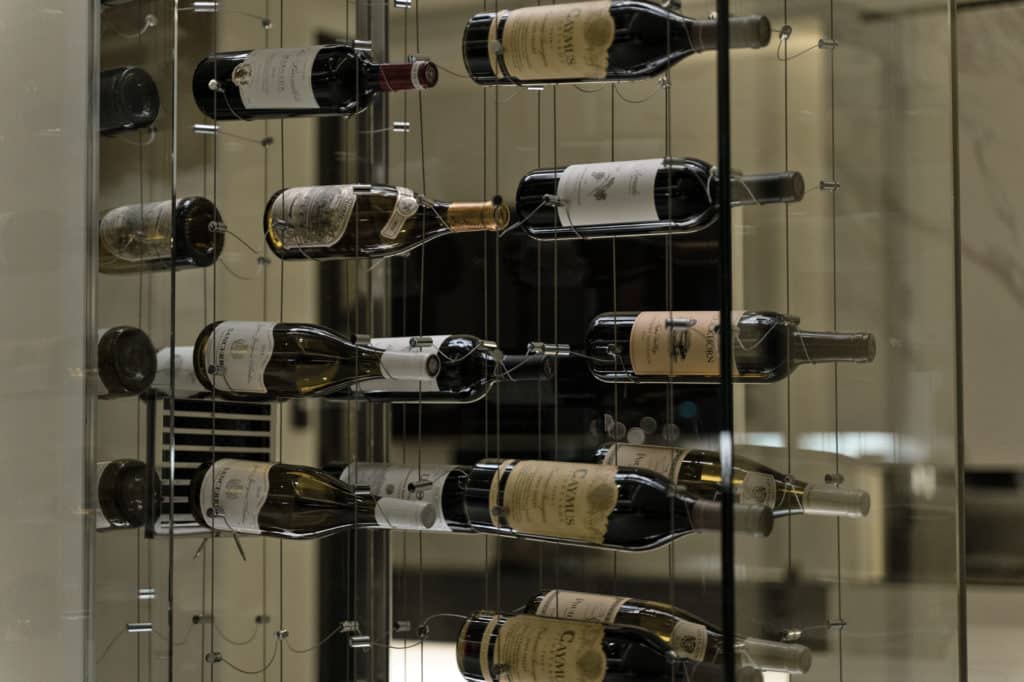
Everything we have talked about so far applies to all types and styles of wine cellar designs. An emerging new trend in wine cellars is to create an all-glass island feature in the main living space that can also be considered a piece of art. Cable wine displays are a technology for presenting wine collections without the use of traditional wooden wine racks.
Cable wine displays make use of systems that hang the bottle of wine so as to create the impression that they are floating in the air. This is a new ultra-contemporary minimalist style that lends itself to more modern home styles. This floating style when coupled with advanced lighting techniques creates marvelous focal point features whilst at the same time taking up very little living space.
While all the above technical details for construction apply equally to cable wine displays, additional care needs to be taken in their design and construction. In most cases special more advanced products need to be used for all glass cable wine display art piece construction. This is due to the constraints associated with the smaller spaces and low profile requirements for mechanical equipment housed within these art pieces. More advanced lighting techniques can also make all the difference to the final appeal of the feature.
See this example of a cable wine display art piece.
How to Choose a Suitable Wine Cellar Contractor
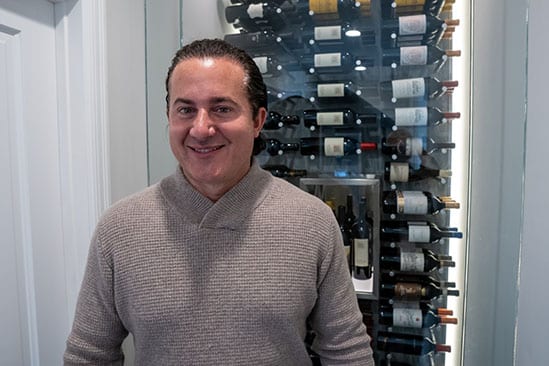
A custom wine cellar is your dedicated place for storing and organizing high-value wines. This can be a place to entertain friends, family, and fellow wine enthusiasts. Beyond that, it also functions as a showroom to help showcase the collection you’ve built up over time.
With that being said, it is only reasonable to select the most qualified contractor in San Diego for your custom dream wine cellar. Remember to look for one that is not only the best but also honest, professional, and within your budget.
Recommendations
The first step in looking for potential contractors to help you with your wine cellar project is by asking people like friends and family for recommendations. You may contact wine merchants near the area as they will likely refer you to a trusted contractor. Search the internet and look up reviews of companies or contractors specializing in customized wine cellar installation.
Credentials
It’s always a good idea to speak face-to-face or on the phone if you already have a list of your desired wine cellar contractors. Before accepting an offer, ask them to show you examples or a portfolio of their past projects. In that way, you might be able to see firsthand the quality of their service and craftsmanship.
Getting an unlicensed contractor for your wine cellar project can have consequences, so make sure you do your research. Wine cellar professional contractors must be licensed in your state and meet all regulatory requirements to provide their services legally.
Take time to investigate the background of a potential contractor to see if he has a legal history in terms of workmanship or business practices. If they have had lawsuits filed against them in the past, this could be a cause for concern.
Get Started in Planning your Own Wine Cellar
Building a customized wine cellar is indeed a big investment for your home. It is crucial to plan how you want it made and which location in your house is best to upgrade to a wine cellar. You also have to consider the appropriate cooling system that will best suit the kind of design or style you want to achieve.
Hiring trusted wine cellar contractors can also advise you in making suitable decisions like selecting the best materials for the design you picked without being costly. With their proven expertise and experience in their field, building your custom wine cellar is no longer a dream.
